5 Reasons Why Posture Rehabilitation Improves Proprioception
5 Reasons Why Posture Rehabilitation Improves Proprioception in Lincoln NE

What is Proprioception and how can Chiropractic care from Auman Chiropractic & Rehab in Lincoln NE help? Proprioception is a sensation perceived by the sensory cortex of where your body is in space. Proprioception refers to the body's ability to sense movement within joints and joint position. This ability enables us to know where our limbs are in space without having to look at them; it is an inherent position sensation.
Proprioceptors are sensors that provide information about joint angle, muscle length, and muscle tension, which gives the contralateral somatosensory cortex information about the position of the limb in space at any given time.
Specialized nerve endings originate in our muscles, fascia, tendons, ligaments, joints, and even the skin. These sensory receptors perceive the amount of pressure and speed at which a movement is occurring and the rate at which the speed is changing, the direction of the movement as well as any pain associated with the movement.
Because proprioceptive signals from the joints, muscles, tendons, and skin are essential for movement, the loss of proprioceptive awareness may affect the control of muscle tone, disrupt reflexes and severely impair voluntary movement.
Brain Cortical Maps:
Proprioception is processed in the sensory homunculus in your brain, the cortical map in the parietal lobe. Communication about joint position and precision of movement occurs between the sensory and motor cortical maps. (Sensory Motor Integration)
Because the brain uses the map to make decisions about how to move, it is obvious that the better and more detailed the map, the better and more precise the movement. By contrast, if the map is ambiguous or indistinct, navigation of the different movement possibilities will be uncoordinated.
Indistinct Maps Cause Pain
Accurate maps produce better motor output. Consequentially, the better we move, the better we feel.
When a joint and associated muscle are not moved, the brain does not sense it as "important" and the cortical map becomes more and more indistinct at that region due to lack of movement. This is an example of the "Use It or Lose It" phenomenon of neuroplasticity.
Improving proprioception improves motor output, and contributes to the reduction of symptoms associated with chronic pain.
Maps are built by movement. Lack of movement will lead to pain and cortical misrepresentation.
Posture and Proprioception in Lincoln NE
Posture rehabilitation in addition to passive joint manipulation is an effective strategy for improving proprioception. Changes in posture affect proprioception, and changes of proprioception affect structural and dynamic postures.
5 Reasons Why Posture Rehabilitation Improves Proprioception
1) Better Proprioceptive Inputs Create More Precise Outputs
A study by Wong et al. (2011) showed that the proprioceptive acuity improved motor learning. The findings support the idea that sensory changes occur in parallel with changes to motor commands during motor learning. Meaning, that the brain uses sensory information to accurately produce motor commands. With better proprioceptive signals to the sensory cortex, the motor cortex controls precise motor output and dynamic posture.
There is also initial evidence suggesting that proprioceptive training induces cortical reorganization, reinforcing the notion that proprioceptive training with posture rehabilitation is a viable method for improving sensorimotor function (Aman et al., 2014).
2) Proprioception Training Augments Motor Learning
The benefit of adding proprioceptive training to rehabilitation protocols is seen in both movement speed and position error. This means that patients with better proprioception can move faster and have less error. These findings support the idea that the addition of proprioceptive training can augment motor learning (Wong et al. 2012). As all coordinated movement depends on proprioception, it is very important to implement proprioception-training protocols.
3) Injury Prevention of Athletes with Neuromuscular Training
Proprioception training improves the joint position sense in elite athletes showing the effect of neuromuscular training in reducing injury rates of athletes (Panics et al., 2008). Research shows that the proprioception sensory function of players in the intervention team who performed proprioceptive training significantly improved between the assessments made at the start and the end of the season. Injury prevention is a fundamental aspect of training protocols for athletes to improve their longevity.
4) Faster Recovery Times Post-Injury
Not only does proprioception training help athletes prevent injury, but it also helps patients recover quicker from injuries and pathologic conditions. Proprioception has a crucial role in promoting or hindering motor learning. In particular, an intact position sense strongly correlates with the chances of recovery after stroke and other pathological conditions. Enhanced kinesthetic acuity with proprioceptive training improves recovery time post-injury (De Santis et al., 2015).
5) Fall Reduction in Elderly Patients
Research was conducted to assess the effect of a proprioceptive dynamic posture-training program on balance in osteoporotic women with kyphotic posture. The subjects who had abnormal balance and used the proprioceptive dynamic posture-training program had the most significant improvement in balance (Sinaki, et al., 2002). Given that impaired balance is associated with an increased propensity to falls, improvements in balance may reduce that risk. The flexed posturing that often develops in elderly persons may place their center of gravity closer to their limit of stability. Balance, gait, and risk of falls among the elderly improve significantly with proprioception training programs (Sinaki et al., 2005).
Two Exercises you can do at home to improve proprioception:
Balance Training:
Performing balance training simultaneously improves proprioception and the vestibular system, which sense postural position in motion. You can begin doing balance training by doing One-Leg Balance exercises (stand on one leg for 30 seconds, head up), and by walking on a balance beam or a straight line that is about the width of a beam. This helps develop accuracy of movement while stabilizing the body upright.
Balance Training with Eyes Closed:
As you develop postural fitness allowing you to balance upright against gravity on one-leg or while walking on a beam, start doing the same exercises with your eyes closed. Do one-leg balance with your eyes closed. Instead of walking on a balance beam with your eyes closed, walk in a straight line for 10 paces, then turn around and walk back to your starting area. Test your ability to walk straight without veering too far off course.
Takeaways:
- The ability of your body to know joint and body position is vital to movement.
- If you stop moving an area of your body with injury or even slowly over time, it will decrease the importance of that area in your brain.
- Improving this ability will help everyone with moving with more precision and more quickly, help elderly with balance and reduce falls, help athletes with injury reduction and improved performance, and all of us with quicker recovery from injuries.
Auman Chiropractic & Rehab puts a focus on posture improvements that will improve proprioception and posture and lead to better long term outcomes.
OFFICE HOURS
Monday
8:00am - 12:00pm
2:00pm - 5:30pm
Tuesday
8:00am - 12:00pm
2:00pm - 5:30pm
Wednesday
8:00am - 12:00pm
2:00pm - 5:30pm
Thursday
8:00am - 12:00pm
2:00pm - 5:30pm
Friday
8:00am - 12:00pm
Saturday & Sunday
Closed
Auman Chiropractic & Rehab
4630 Antelope Creek Rd #155
Lincoln, NE 68506



